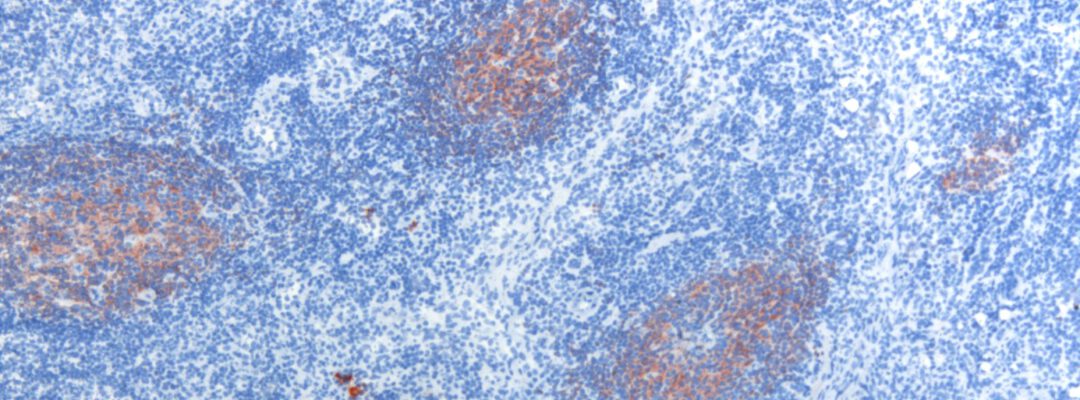WP7 and WP8
WP7 Effects and efficacy of B-cell targeting in B-IMD/ B-ONC
Work package 7 is all about B cell-targeting therapies in B cell-mediated autoimmune diseases and malignancies. Although B cell-targeting therapies are widely used in these diseases, it is unclear why some patients respond well to therapy, and others do not. In this work package, we will identify biomarkers that can be used to monitor and predict treatment outcome. For these studies, we will include blood samples from suitable patients cohorts identified in WP1, and analyze these samples using the techniques optimized and harmonized in WP2 and WP5.
We will study patient blood samples obtained shortly before onset, during and after treatment. The immunological markers measured in blood will be correlated with clinical signs of disease to identify those markers that correlate with the outcome of disease and can be used as a biomarker to predict which therapy is best for a patient. We are currently setting-up the first analyses of samples from systemic sclerosis and granulomatosis with polyangiitis patients. We will use state of the art techniques to investigate what the immune cells in the blood look like, how active they are and whether this changes during treatment.
Importantly, the biomarkers that we find can also be used to identify patients with other non-autoimmune or malignant diseases that may benefit from B cell targeting therapies. To explore this possibility, we will also study the new biomarkers in patients with e.g. pulmonary fibrosis, which is not an autoimmune disease, but often features immune cell activation. The biomarkers identified in this work package that can predict treatment outcome will help to develop ‘personalized medicine’, which is an important step towards better treatment for individual patients.

WP 8: Effects and efficacy of antibody removal in B-IMD/ B-ONC
In work package 8, we are focusing on the effects of antibody removal on B-cells and plasma cells in different B-cell related autoimmune diseases and paraprotein associated diseases, including Myasthenia Gravis (MG), Anti-neutrophil cytoplasm antibody (ANCA)-associated vasculitis (AAV), anti-glomerular basement membrane (anti-GBM) disease and cryoglobulinemic vasculitis.
Apheresis techniques like therapeutic plasma exchange are often added to immunosuppressive drugs as rapid autoantibody removal is considered to prevent further damage and to lower the need for toxic medication. Moreover there is some evidence that due to the rapid removal of antibodies plasma cells and maybe B-cells are primed and subsequently more sensitive to immunosuppressive therapy. In the past years immunoadsorption has been shown to be an attractive alternative to therapeutic plasma exchange for a more efficient and specific removal of autoantibodies in many indications. Nevertheless, the clinical response to these immune depleting therapies is variable, and frequently unpredictable. Better understanding of the dynamics of the immune system during therapy is needed to improve tailor made and precise choice of therapy for these immune mediated disorders.
For this reason, a multicenter, prospective, observational cohort study will be conducted to assess the effects of antibody removal by immunoadsorption on the immune phenotype over time in patients with the above mentioned diseases and to integrate these data with clinical outcome measures. Similar to WP 7, the data will be analyzed using the techniques optimized and harmonized in WP2 and 5. The insights of this study will improve the understanding of the dynamics of the immune system during antibody removal in these diseases and will eventually lead to better therapeutic decisions individually for each patient.

Immunoadsorption: removal of (auto)antibodies
Source reference: Fresenius Medical Care Nederland B.V.
Collaborators

Jaap Groothoff

Dr. Pieter van Paassen








